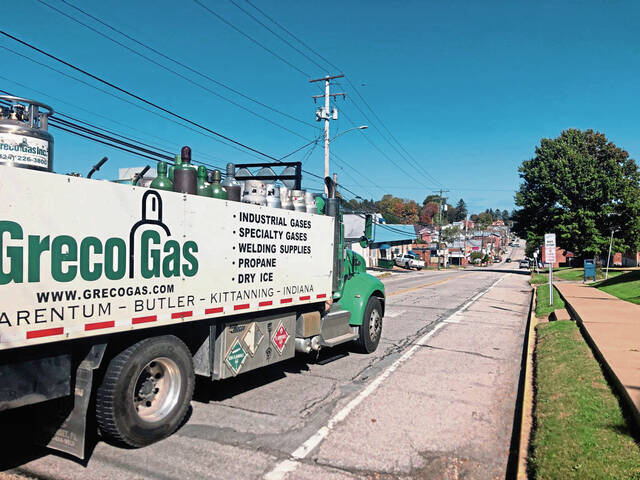https://mirror.triblive.com/local/westmoreland/delmont-council-approves-transportation-plan-aimed-at-improving-pedestrian-bike-infrastructure/
Delmont council approves transportation plan aimed at improving pedestrian, bike infrastructure

A new active transportation plan approved by Delmont leaders could help leverage future funding and make the community more pedestrian-friendly.
“We have a Mayberry-esque town that could really be walkable, and we just need to enhance that,” said Barb Hauge, a landscape architect with Upstreet Architects in Indiana. “There’s certainly interest in connecting to the Westmoreland Heritage Trail, but there’s also a great need to just have more connectivity within the community, and a balance of those two is what the plan ended up being.”
What began as an effort to map out a potential connection to the Westmoreland Heritage Trail blossomed over the years into a larger push to add everyday amenities for both residents and businesses.
“We found out that, in applying for grants, it makes more sense to have something like this in place,” said Delmont Visionary Committee member Annamarie Stackiewicz. “They want to know what your plan is.”
Using a $20,000 grant from the state Department of Health WalkWorks program and the state Department of Conservation and Natural Resources, the committee consulted with Thomas R. Harley Architects, the EADS Group, the Smart Growth Partnership of Westmoreland County and the Penn State Extension to develop the nearly 50-page plan.
But it’s not just about the long-range growth plan, according to Penn State Extension Community Development Coordinator John Turack.
“The plan helps you better prioritize your town’s resources,” Turack said. “And beyond that, once you have a plan, people can look at it and make individual decisions about how it affects their lives. And they may have their own resources they can bring to the table. It’s really a plan for the whole community.”
In 2019, committee members worked with students from Indiana University of Pennsylvania to explore different routes to connect the borough with the final section of the Westmoreland Heritage Trail linking Export and Delmont.
The active transportation plan includes a map with more than a half-dozen potential routes through the borough that can connect pedestrians and cyclists with the future path of the trail. They include public streets, borough property and private property that would require an easement to cross.
But that is just one of three main priorities in the plan. Another is general improvement of the existing walking and biking infrastructure in town: sidewalk improvement and replacement, streetscape improvements, the installation of curb cuts and improved crosswalk times at borough traffic lights.
Committee members also identified more than 20 places in the borough that are regular destinations and mapped out the paths connecting those areas where pedestrian and bike infrastructure can be improved.
Some elements of the plan are out of the committee’s control, such as a PennDOT proposal to install sidewalks along Route 66 through Delmont. The plan stresses maintaining contact with PennDOT and encouraging the agency to move forward with that proposal.
“We tried to put a lot of options into the plan, so that no single item is ‘do-or-die,’ ” Turack said. “That way, different funding sources can help with different pieces of the plan.”
The Delmont Visionary Committee will meet next at 7 p.m. Nov. 1 in the Delmont Public Library, 75 School St. For more, see Delmont1.wixsite.com/delmontvisionarycomm.
Copyright ©2025— Trib Total Media, LLC (TribLIVE.com)
